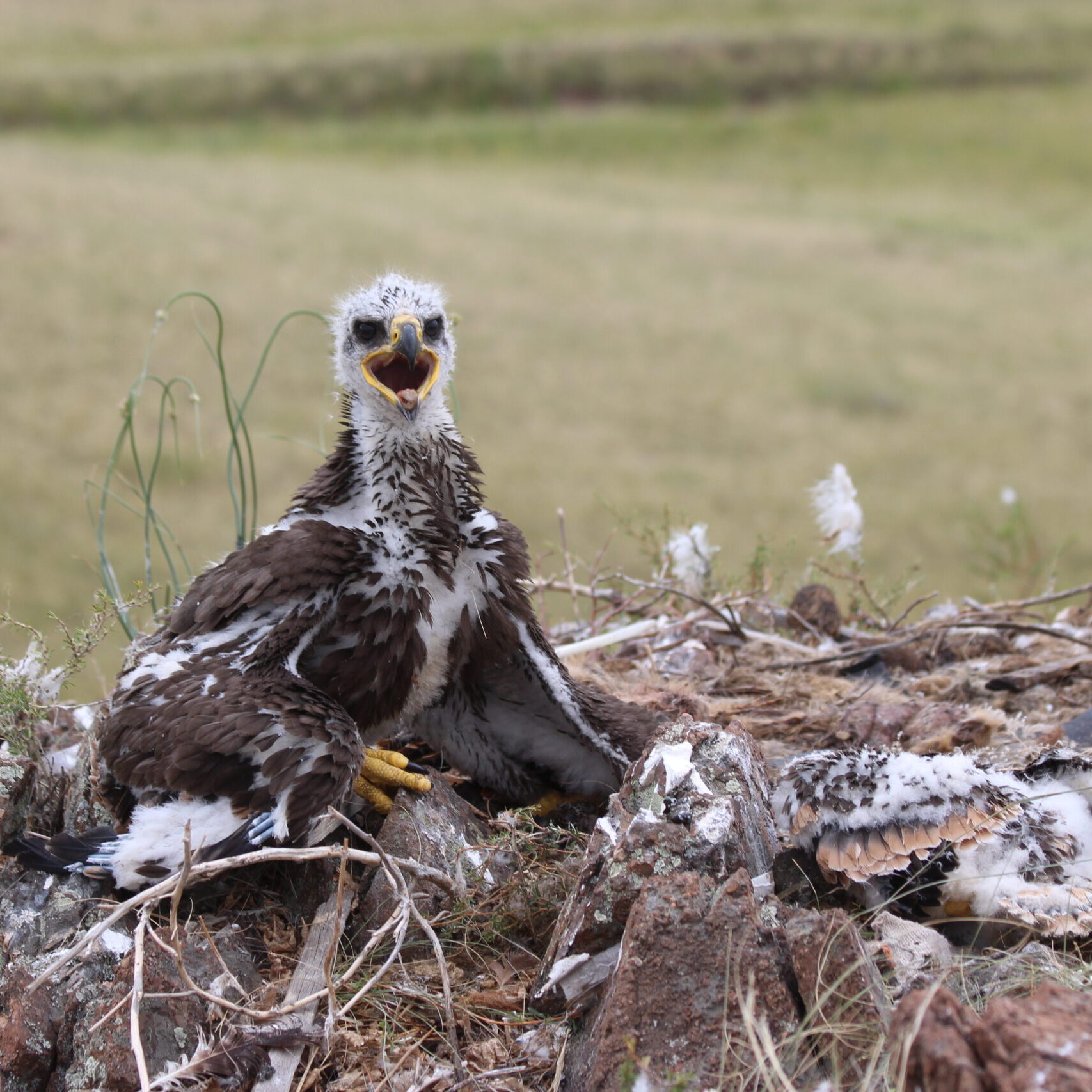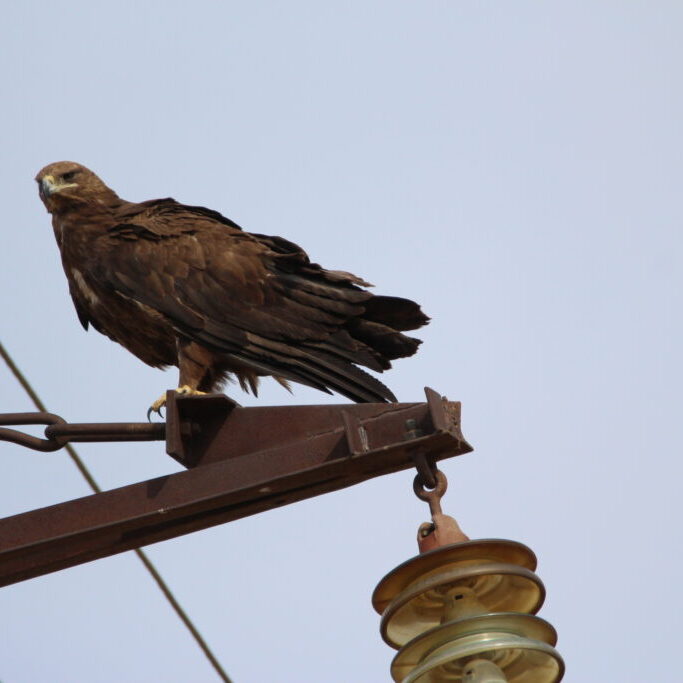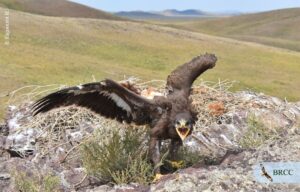Steppe eagle

Steppe Eagle (Aquila nipalensisSteppe Eagle (Aquila nipalensis) is a symbol of the Kazakh steppe. 68.5 – 82.2% of the world species population nests in Kazakhstan, the number of the species for 2023 amounted to 16750–28070 breeding pairs. Steppe Eagle numbers are declining (RRRCN).
Conservation status
“Endangered” (EN) listed by the International Union for Conservation of Nature (IUCN);
“Restored, in need of constant monitoring” (Category V) in the Red Book of the Republic of Kazakhstan (Source link) or (PDF File);
Included in Appendix II of the CITES Convention;
Included in the List of rare and endangered animal species of the Republic of Kazakhstan.
Appearance
A large eagle with wide and long wings and a short rounded tail. Coloration of adult birds is monophonic dark brown. The flight feathers underneath are the same color as the wing coverts and belly, or darker than them, with a clearly visible transverse striping. There is a white spot on the upper tail. There is a rusty or ocher spot on the back of the head, the size of which varies significantly in different individuals. Young and semi-adult birds have a narrow white stripe on the underside of the wing, formed by large undercoverts of the flight feathers (the so-called “juvenile” stripe), which clearly distinguishes Steppe Eagles of this age from other eagle species (RRRCN).

Species distribution
Breeds in steppes, semi-deserts, and deserts throughout central Kazakhstan. Found everywhere on roaming and migration (kz.birding.day).
Threats
- Death from an electric shock on overhead power lines (OPL) with a capacity of 6-10 kV.
- Habitat loss;
- Poisoning in wintering areas;
- Illegal catch and trade;

